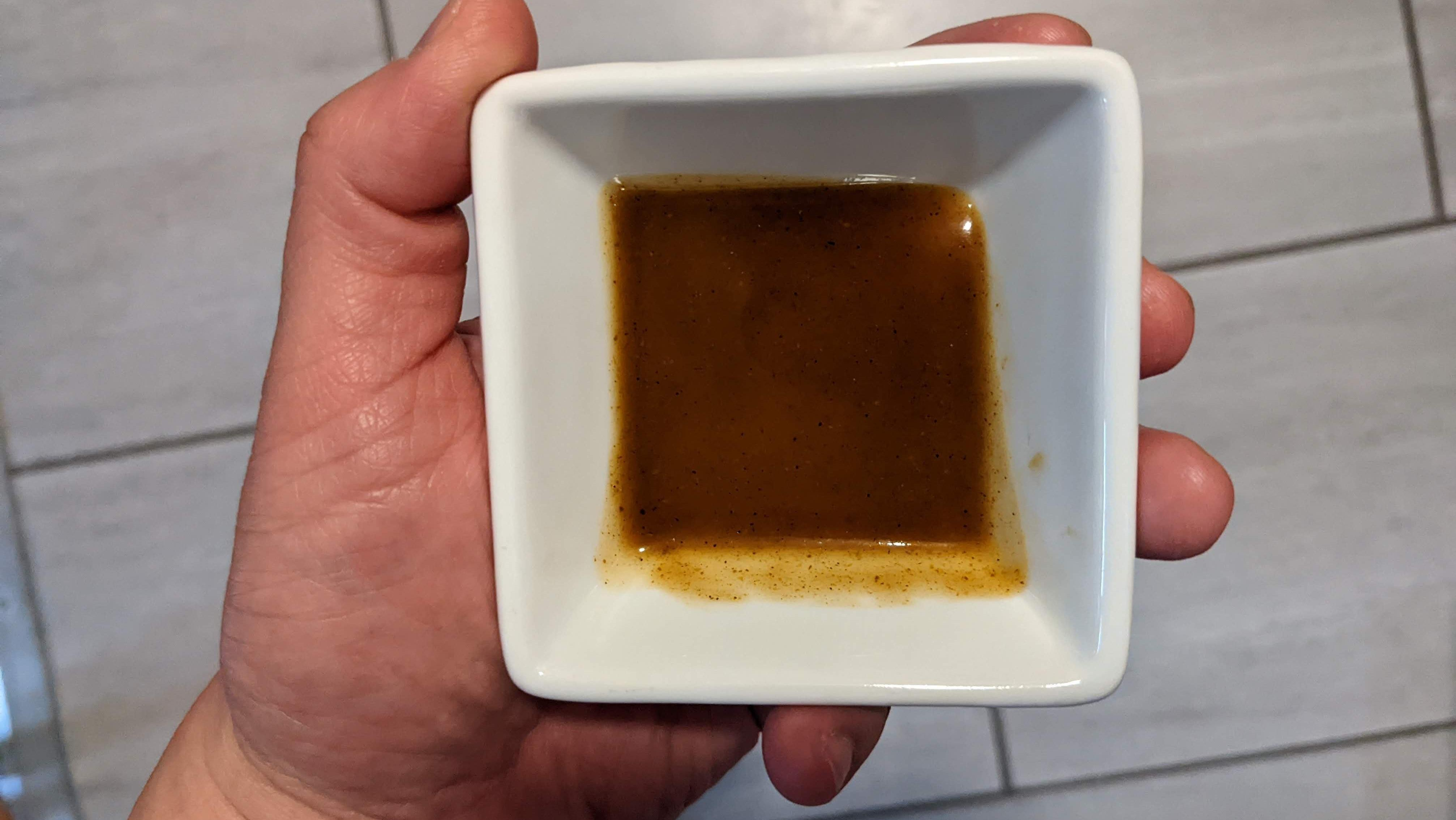This Costa Rican Staple Is Your New Secret Ingredient
Lizano Salsa is the condiment that you can pair with nearly anything. We mean it.
Cermak Fresh Market, a local chain of international grocery stores, is the spot in my neighborhood where I've been introduced to so many culinary treasures. It's one of those shops where I can browse for an hour and find a boatload of new curiosities to bring home, along with the usual staples like produce, meat, and brand-name products. I love that grocery store so much that I even like to pay a visit when I'm bored. When I do, I'm always rewarded.
On one of my recent trips, I found a dark bottle with a distinct green cap to it, labeled "Lizano Salsa." I'd read about the stuff a while back and learned that it can be fairly difficult to find outside of Costa Rica. But there it was, staring me in the face on a shelf in Chicago. I eagerly grabbed a bottle and took it home to examine it further.
What is Lizano Salsa?
Lizano's ingredient list starts with sugar and salt, but it also contains an all-vegan roster of components like cucumber, carrots, onion, and cauliflower, along with a blend of spices. In Costa Rica, it's commonly on tables in household kitchens and at restaurants as an all-purpose condiment. But is it really "all-purpose"? What does that mean for a condiment, anyway? That's a hefty weight for one sauce to bear.
The sauce is brown, a little on the thin side, and flecked with spices. It smells sweet and vinegary, and once I tasted it, I understood its appeal immediately. It is indeed somewhat sweet, but it's also tart, with a complex profile from the various pastes I listed above. Overall I'd say it has some similarities to both Worcestershire and HP Sauce, but with a distinct, nearly smoky flavor from the cumin and other spices. There's no heat to it whatsoever, so those who are tired of the proliferation of hot sauce on the market, this might be what you never knew you needed.
The best uses for Lizano Salsa
I did some internet research in order to understand Lizano better; most sites only had vague descriptions of how to use it. I figured that since it was a table sauce, I might as well use it with, well, everything. I dipped pieces of roasted chicken breast in it, which ended up being fantastic; my fiancée tried it on some pork shoulder tacos, which she swore by; and it could easily be incorporated into a range of marinades and sauces, thanks to its sweet, smoky profile. Grilling season is coming up, and it'd make a perfect finishing glaze for some chicken.
Shit, now I'm imagining myself using it as a dipping sauce for McNuggets and fries, and it might just be a suitable replacement for Sweet and Sour sauce, which, let's face it, doesn't have much flavor other than just "sweet."
In fact, for any dish that needs a boost in both the acid and sweetness departments—barbecue sauce, steak sauce, a bean dish—consider Lizano your secret ingredient. I'm always skeptical of anything we rush to call an "all-purpose" sauce, since you can't really have that one perfect flavor that goes well with everything. But since it has various elements that can be played up or down depending on what you pair it with, Lizano Salsa might be the closest to one I've ever tried.
I've found that it's almost impossible to find it at big-box supermarkets, so those of you without an international grocery store nearby can try ordering online. The markup is steep, however: I paid a single-digit sum for one bottle, but on Amazon and Walmart.com, I'm seeing that one 700ml bottle starts at $15, which just goes to show its rarity outside of Costa Rica. Or at least, the rarity of its current demand outside of Costa Rica. If you all pick up a bottle and start experimenting with it, we just might be able to change that.

